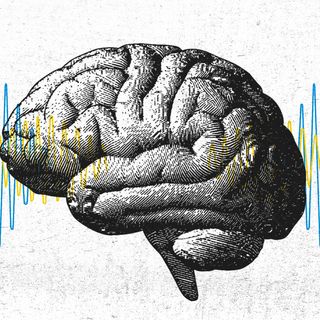Scientists have identified ancient viruses previously unknown to humans that were frozen in time for 15,000 years in Tibetan glaciers. The discovery provides a glimpse into the ancient life forms, and how glacial melting due to climate change can potentially affect us.
Published in Microbiome this week, the researchers analyzed two ice samples from the Guliya ice cap of the Tibetan Plateau in China, which trapped various particles at the time they were formed. The researchers identified dozens of unique 15,000-year-old viruses that thrived in extreme environments back in 2015.
“These glaciers were formed gradually, and along with dust and gases, many, many viruses were also deposited in that ice,” said Zhi-Ping Zhong, a microbiologist from the Ohio State University in the U.S., who led the study. Researchers noted the layers of ice create something akin to a timeline — with each layer trapping varying microbes, viruses, and gases throughout history.
Researchers are hopeful the present discovery could provide them with interesting insights into past environmental changes, as well as about the evolution of microbes. “We know very little about viruses and microbes in these extreme environments, and what is actually there,” said Lonnie Thompson, professor of earth sciences at Ohio State University in the U.S., who also co-authored the study.
“How do bacteria and viruses respond to climate change? What happens when we go from an ice age to a warm period like we’re in now?” — are questions she’s hoping further studies into ancient microbes can answer.
Related on The Swaddle:
Scientists Preserve 10,000‑Year‑Old Ice As ‘Climate Memory’ For the Future
But that’s not all. Amid a pandemic, discoveries of ancient viruses seem even grimmer — more so as Zhong says that “melting will not only lead to the loss of those ancient, archived microbes, and viruses, but also release them to the environments in the future.”
Experts have pointed out the threat of viruses emerging out of melted glaciers before. “Climate change is melting permafrost soils that have been frozen for thousands of years, and as the soils melt they are releasing ancient viruses and bacteria that, having lain dormant, are springing back to life,” an article on BBC Future stated.
A notable example is from 2016 in Siberia, when a 12-year-old boy died and at least twenty people were hospitalized after being infected by anthrax. Scientists theorize that a reindeer infected with anthrax more than 75 years ago may have died and its frozen carcass trapped under frozen soil may have become permafrost. Due to severe heatwaves, the ice could have thawed causing the dormant virus to emerge.
In fact, with the permafrost thawing rapidly due to global warming, several remains have been discovered over the last few years: an extinct cave lion cub in 2017, an 18,000-year-old prehistoric puppy in 2018, a 42,000-year-old foal and 32,000-year-old wolf head in 2019, and well-preserved bones of a 10,000-year-old woolly mammoth just last year.
While the scientists are, of course, intrigued by the research potential these discoveries hold, the fact that global warming is causing glaciers to melt rapidly, leading to these discoveries, is also alarming. Melting ice releases massive reserves of sequestered greenhouse gases, like methane and carbon dioxide, that exacerbate global warming — the cause for ice to melt, in the first place.




